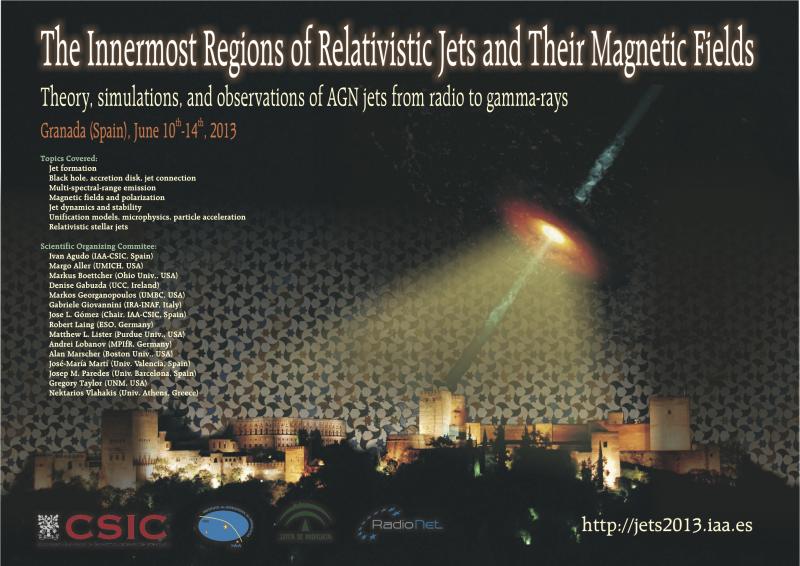The Innermost Regions of Relativistic Jets and Their Magnetic Fields. Granada (Spain). June 10th-14th, 2013.
Vila, Gabriela
High-energy signatures of binary supermassive black holes.
Author list: Gabriela Vila, Daniela Pérez & Gustavo E. Romero
The accretion disk around a supermassive black hole may be strongly perturbed by the presence of a supermassive secondary. Recent studies by Kocsis et al. (2012) have shown that, under certain conditions, the system relaxes to a quasi steady state in which the tidal torque of the secondary black hole fails to open a central gap in the disk, and matter "overflows" across the orbit to accrete onto the primary. The structure of such an accretion disk, however, considerably differs from that predicted by the standard model. In this work we study the radiative properties of a binary system of supermassive black holes, assuming that a relativistic jet is being launched from the primary and that the migration of the secondary across the disk proceeds in the "overflowing" regime. We consider different orientations of the jet with respect to the accretion disk and the line of sight. The modified two-bump radiative spectrum of the disk is calculated accounting for strong gravitational effects in the innermost region. The jet emits non-thermal radiation all along the electromagnetic spectrum by interaction of locally accelerated particles (electrons and protons) with matter, magnetic field, and internal and external radiation fields. In particular, we investigate whether the inverse Compton spectrum of scattered disk photons presents any signature that may disclose the presence of the secondary black hole.




